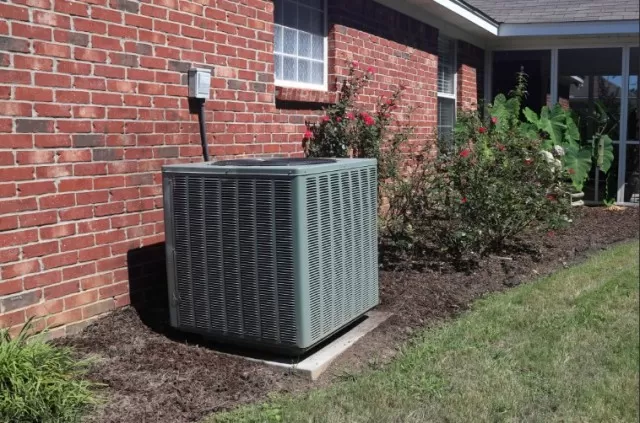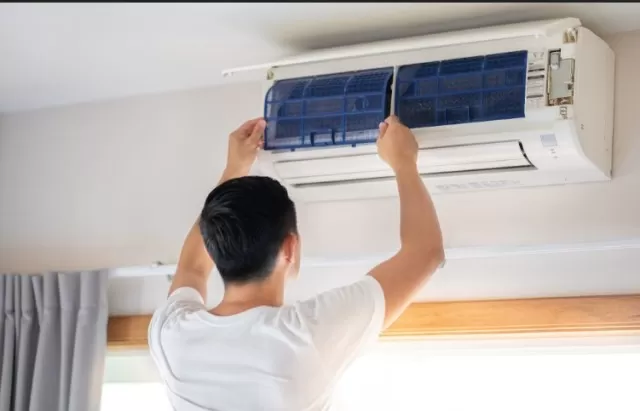AC Cheat Sheet: Choosing the Right Unit for Your Home. If you’re feeling a bit out of touch with the latest advancements in air conditioning technology, it’s wise to consult an HVAC expert who can bring you up to speed on the four popular types of AC units available today.
By consulting an HVAC expert, you can gain a comprehensive understanding of each AC type’s features, benefits, and limitations. They can help you assess your specific cooling needs, consider factors like energy efficiency and installation requirements, and guide you in making an informed decision on the best air conditioning solution for your situation.
Upgrade Your Central Air Conditioner: Signs It’s Time for a Replacement and Tips for Choosing the Right Model

If you’ve been relying on the central air conditioning system that came with your home when you purchased it, it’s crucial to keep track of its age.
Over time, air conditioners become less efficient and may exhibit various signs indicating their declining performance. Typical indicators include soaring utility bills, decreased airflow from the vents, elevated indoor humidity levels, and even unpleasant grinding noises when the AC turns on.
When these signs, combined with the unit’s age, start to show, it’s a clear indication that your air conditioner is approaching the end of its useful life.
In general, most air conditioners operate optimally and efficiently for approximately 10 years. Therefore, if your appliance has entered the double-digit milestone, it’s probably time to consider replacing it with a modern model like the Goodman 1.
5 Ton 16 SEER Central Air Conditioner (available from SupplyHouse).
It’s worth noting that the installation of this type of air conditioner requires professional expertise as it involves connecting refrigerant lines.
In most states, an HVAC professional is required to handle the installation process. Moreover, before making a purchase, it’s advisable to consult an expert who can assist you in selecting the appropriate unit size based on your home’s dimensions and configuration.
It’s crucial to strike a balance between choosing an air conditioner that is powerful enough to effectively cool your home while avoiding an oversized unit. Opting for a unit that is too large can result in inefficient electricity usage and excessively rapid cooling, which may prevent the system from adequately dehumidifying the room.
Keep in mind that air conditioners not only cool the air but also draw out excess moisture, contributing to indoor comfort. Once you have a new central air conditioner in place, you can expect immediate improvements in both the comfort level of your home and the cost of your utility bills.
Enhance Your Rental Property\’s Comfort: Exploring Air Conditioning Options Without Ductwork

Investing in an affordable home for rental purposes can yield great returns, and having air conditioning installed in the property can make it even more appealing to potential tenants.
However, if your rental property doesn’t already have central air conditioning, the cost of installing ducts and a new system can be quite substantial. To keep expenses in check, many rental property owners turn to window air conditioners or Packaged Terminal Air Conditioners (PTACs).
Window air conditioners are a practical choice, especially when there is an existing window to accommodate them.
However, in rooms without windows or with fixed or small windows that cannot accommodate a window unit, a PTAC can come to the rescue. If you’re unfamiliar with PTACs, think of the air conditioners commonly seen in large hotel chains—those rectangular units positioned along an exterior wall, just a few inches above the floor.
Like window air conditioners, PTACs have temperature controls conveniently located on the face of the unit.
“Landlords are increasingly opting for PTAC units,” says O’Brian, explaining that “they provide an affordable solution without the need for ductwork.
” Both window units and PTACs are self-contained systems, with the compressor housed inside the unit itself, unlike central air-conditioning systems where the compressor is located outside. As a result, they do produce some noise during operation.
However, modern models like the LG 10,2000 BTU Packaged Air Conditioner (available from SupplyHouse) are significantly quieter compared to those from a decade ago. Most emit nothing more than a barely noticeable hum!.
While setting up a window air conditioner is often a do-it-yourself project, installing a PTAC is more complex.
It involves removing a section of the exterior wall and framing a rough opening to accommodate the new unit. Homeowners with basic carpentry and framing skills may feel confident in tackling the installation themselves, but the average homeowner would likely prefer to hire a professional.
One thing is certain: Always reach out to your local building authority to determine if a permit is required before commencing any installation work.
Efficiently Cool Your New Home Addition: Exploring Ductless Mini-Split Air Conditioners

As real estate prices continue to rise, homeowners are increasingly choosing to expand their existing homes instead of purchasing larger or new properties.
Additions provide valuable extra living space and can significantly enhance the layout of a home. However, keeping these new spaces cool during hot weather can present challenges.
For instance, it may have been impractical to connect the addition to the home’s existing central air system during the construction process, or the current system may not be adequately sized to accommodate the additional ductwork.
In such situations, the most suitable air conditioning option is a ductless mini-split system, such as the highly efficient Comfort-Aire DV-Series Ductless Mini-Split Air Conditioner (available from SupplyHouse).
“Ductless mini-split systems offer an excellent solution for room additions,” advises O’Brian. Their primary advantage is that, similar to central air-conditioning systems, the compressor is located outdoors, resulting in virtually silent operation.
Mini-splits are typically mounted along the upper edge of an exterior wall. However, it’s important to note that installing them is not a do-it-yourself project.
Like central AC systems, mini-splits require the connection of refrigerant lines, necessitating the expertise of an HVAC professional.
By opting for a ductless mini-split air conditioner, you can effectively cool your new home addition without the need for extensive ductwork or modifying the existing central air system.
These systems offer precise temperature control, improved energy efficiency, and quiet operation. To ensure a proper installation and optimal performance, it’s essential to engage the services of an HVAC professional who can expertly connect and set up the mini-split system.
With the right cooling solution in place, you can enjoy the comfort of your new addition all year round.
*The information is for reference only.